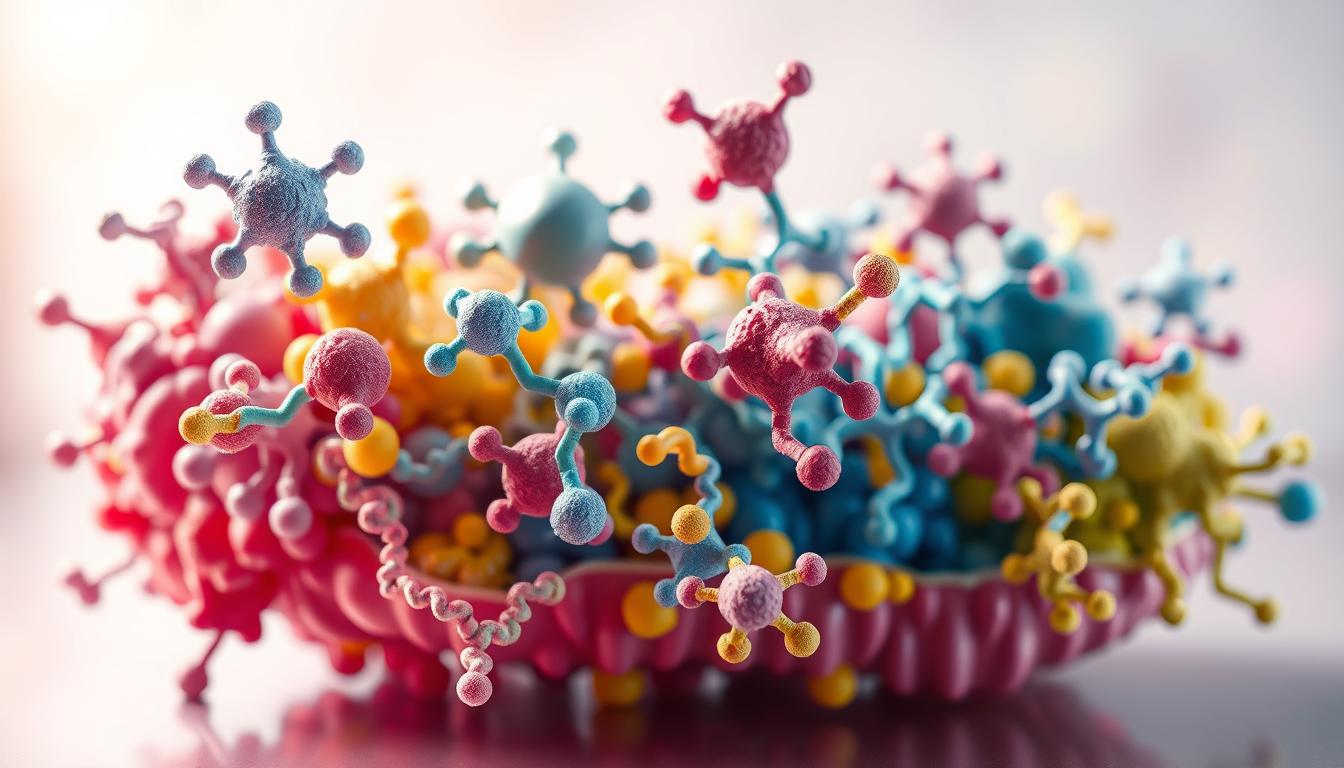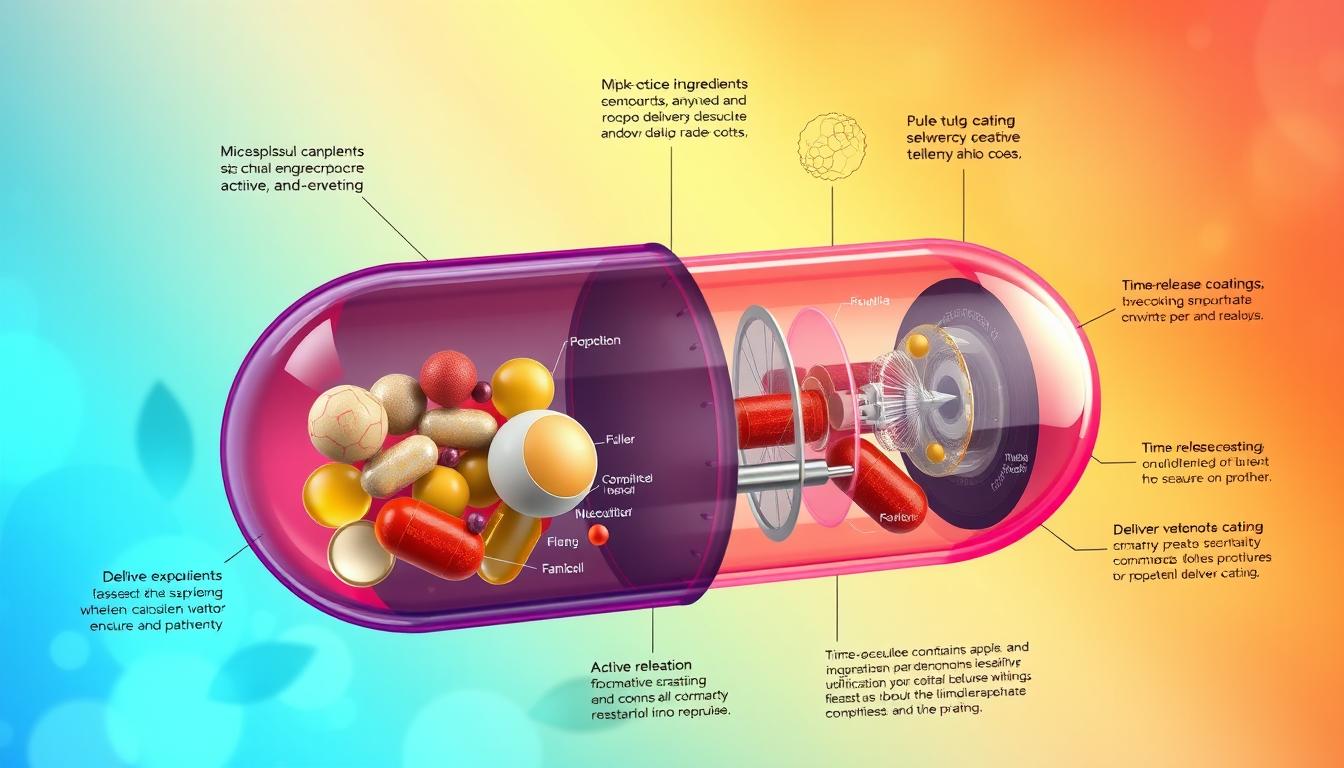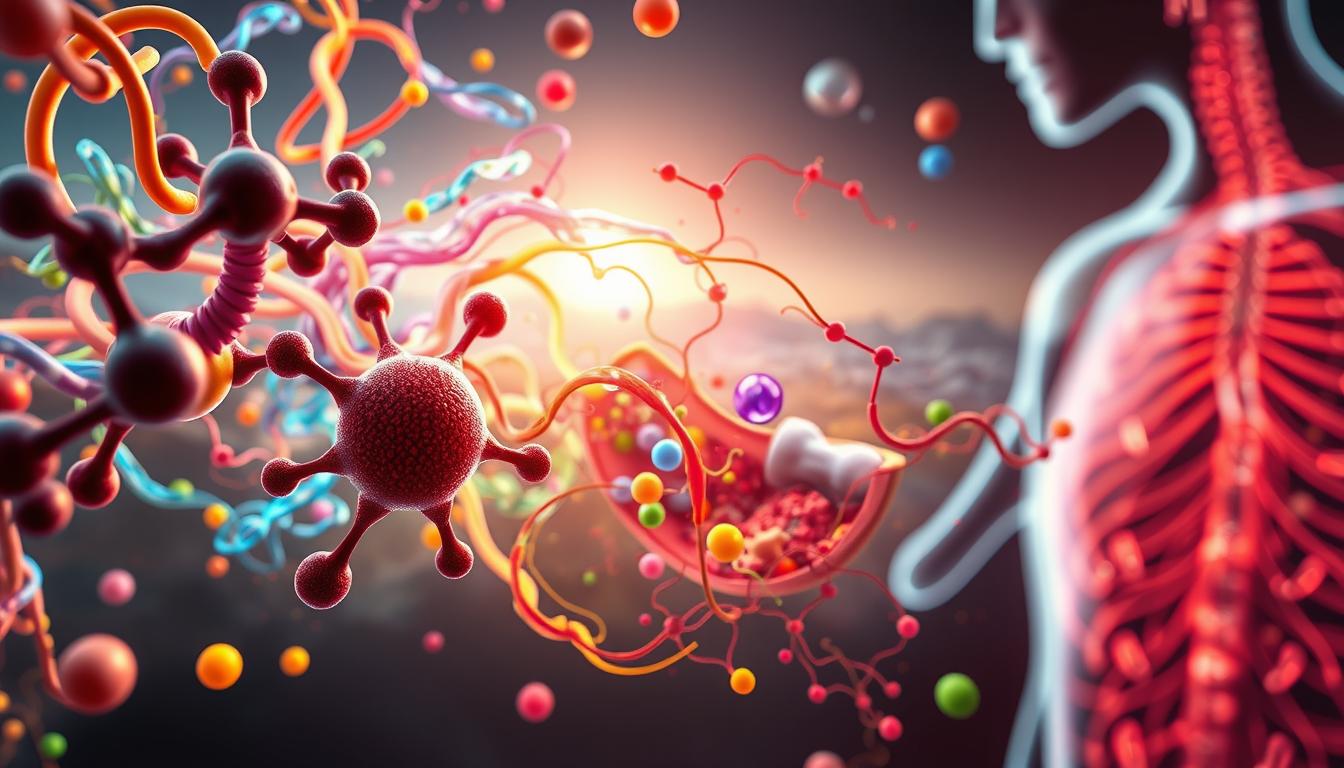Only 25% of people who lose weight through diet and exercise keep it off long-term. This startling statistic reveals why many turn to supplements like forskolin—an herbal extract from the Indian coleus plant. Since its 2014 feature on “The Dr. Oz Show”, forskolin has become a go-to for weight management. But what if missing nutrients in your body could render it ineffective?
Research shows supplements often depend on your body’s existing nutritional balance. For example, enzymes activated by forskolin require specific vitamins and minerals to function. Without these, even the most popular products may fall short of expectations.
Your metabolic health plays a bigger role than you might realize. Factors like vitamin D, magnesium, or zinc levels can directly impact how well your body responds to herbal aids. This gap explains why some see dramatic results while others feel stuck.
Key Takeaways
- Nutrient deficiencies can block forskolin’s ability to support weight management
- Enzymatic processes linked to supplements require specific vitamins and minerals
- Metabolic health determines how effectively your body uses herbal extracts
- Long-term success often depends on addressing nutritional gaps first
- Supplements alone rarely compensate for inadequate dietary foundations
Introduction to Forskolin and Its Role in Weight Loss
Weight management strategies often overlook a critical factor: your body’s nutritional foundation. Supplements like forskolin—derived from the Coleus forskohlii plant—work by activating enzymes linked to fat metabolism. But these processes stall without adequate vitamins and minerals.

How Supplements Interact With Your Biology
Forskohlii extract targets adenylate cyclase, an enzyme that triggers fat breakdown. This mechanism requires magnesium to produce energy molecules and zinc to regulate hormone function. Studies show low levels of these nutrients reduce cellular response to herbal compounds by up to 40%.
“Enzyme activation isn’t a solo act—it’s a symphony of cofactors and substrates working in unison.”
Common Roadblocks in Metabolic Support
Many weight loss supplements claim to bypass dietary gaps, but biology disagrees. For example:
| Nutrient | Role in Fat Metabolism | Dietary Sources |
|---|---|---|
| Vitamin D | Regulates insulin sensitivity | Fatty fish, fortified dairy |
| Magnesium | Activates ATP production | Spinach, almonds |
| Zinc | Supports leptin hormone function | Oysters, pumpkin seeds |
Without these elements, your system can’t efficiently convert stored fat into usable energy. This explains why two people using the same supplement often get different results.
The Origins and Traditional Uses of Forskolin
Long before weight management became its primary claim, the Indian coleus plant served as a cornerstone of holistic healing. For over 3,000 years, Ayurvedic practitioners brewed Coleus forskohlii roots to address respiratory distress and cardiovascular concerns. This approach treated the whole body rather than isolated symptoms.

Indian Coleus and Ayurvedic Benefits
Traditional healers recognized the plant’s dual action on lungs and heart. Asthma patients inhaled steam from boiled roots to open airways, while heart-related preparations often combined the herb with magnesium-rich foods like almonds. This synergy between bioactive compounds and dietary nutrients maximized therapeutic outcomes.
Ancient texts describe four key applications:
- Bronchial dilation for cough relief
- Blood pressure regulation through vascular relaxation
- Skin infection treatment using antimicrobial properties
- Digestive support via enzyme stimulation
Transition to Modern Weight Loss Supplements
Modern extraction methods isolate forskolin from its natural context. Unlike traditional teas that delivered the compound alongside native cofactors, today’s capsules often lack these supportive nutrients. Research suggests this separation reduces bioavailability by 15-20% compared to whole-plant preparations.
| Aspect | Traditional Use | Modern Supplements |
|---|---|---|
| Preparation | Whole root tea | Standardized extract |
| Nutrient Context | Natural cofactors present | Isolated compound |
| Therapeutic Approach | Combined with dietary herbs | Single-ingredient focus |
This shift explains why historical users reported broader health benefits compared to contemporary weight-centric results. Your understanding of this evolution helps explain why pairing supplements with nutrient-dense diets yields better outcomes.
How Weight Loss Supplements Work
Understanding how weight loss supplements function requires diving into cellular processes most users never consider. These products operate through three primary pathways: boosting calorie burn, curbing hunger signals, and enhancing metabolic efficiency. Each mechanism depends on your body’s ability to access specific nutrients for optimal performance.

Mechanisms of Fat Breakdown and Energy Expenditure
Thermogenic supplements like caffeine increase heat production, raising your resting energy expenditure by 5-15%. This process demands B-vitamins and magnesium to convert stored fat into usable energy. Without these nutrients, your cells can’t sustain the heightened metabolic activity these products trigger.
Appetite-control formulas target hormone levels linked to hunger. They boost peptide YY (PYY) while suppressing ghrelin—the “hunger hormone.” Effective neurotransmitter production for this balance requires adequate protein intake and amino acids like tryptophan.
The Importance of a Calorie Deficit
No supplement overrides the basic math of weight loss: you must burn more calories than you consume. Supplements merely support this equation by:
| Mechanism | Key Process | Required Nutrients |
|---|---|---|
| Thermogenesis | Heat-based calorie burn | B-vitamins, magnesium |
| Appetite Suppression | Hormone regulation | Amino acids, zinc |
| Metabolic Enhancement | Enzyme activation | Vitamin D, iron |
A 2022 study found participants with balanced nutrient levels lost 23% more weight using supplements than those with deficiencies. This highlights why pairing products with nutrient-rich foods delivers better results.
Why Forskolin Might Not Work If You’re Low on These Nutrients
Enzyme-driven fat breakdown requires more than just supplements—it demands precise nutritional partnerships. When mobilizing stored fats, your body relies on a network of vitamins and minerals to convert compounds into actionable results. Missing these collaborators can leave even promising strategies incomplete.

Impact of Nutrient Levels on Enzyme Activity
Hormone-sensitive lipase—the enzyme activated by this supplement—functions like a locked door. Nutrients act as keys that turn its mechanism. B-vitamins fuel the energy transfer, while magnesium stabilizes ATP molecules needed for sustained metabolic activity.
| Nutrient | Role in Fat Mobilization | Daily Target* |
|---|---|---|
| Vitamin B6 | Converts fatty acids into energy | 1.3-1.7 mg |
| Magnesium | Supports 300+ enzymatic reactions | 310-420 mg |
| CoQ10 | Powers mitochondrial energy production | 30-200 mg |
*National Institutes of Health recommendations for adults
“Nutrient cofactors don’t just assist enzymes—they dictate whether biological processes stall or thrive.” – Journal of Nutritional Biochemistry
Research Insights on Nutrient-Supplement Interactions
A 2023 clinical trial revealed critical connections between baseline nutrient status and supplement outcomes. Participants with optimal zinc and vitamin D levels experienced 28% greater fat oxidation when using the extract compared to deficient groups.
Three factors determine responsiveness:
- Thyroid hormones requiring selenium for conversion
- Insulin sensitivity supported by chromium
- Cellular energy pathways dependent on riboflavin
Addressing these areas first creates the metabolic environment where targeted products can excel. Pairing strategic nutrition with supplementation often yields better results than either approach alone.
Scientific Evidence and Research Findings
Clinical trials reveal puzzling contradictions about herbal supplements. A 2015 study of 30 men showed waist reductions in both forskolin and placebo groups—likely from calorie control rather than the extract. Yet a 2005 trial with similar participants reported preserved muscle mass and higher free testosterone levels in those taking the supplement.

Review of Clinical Studies and Trials
Research outcomes depend heavily on study design. The 12-week trial using 250 mg doses twice daily found no weight loss difference between groups. Both reduced waist measurements by 1.2-1.5 inches, suggesting lifestyle changes drove results. Contrast this with earlier work where participants maintained lean body mass while shedding fat—a rare combination in weight loss research.
Comparative Analysis of Results in Men
Male-focused studies highlight gender-specific responses. Testosterone level increases in the 2005 research could explain muscle retention, since the hormone aids protein synthesis. However, later trials failed to replicate these effects. This inconsistency points to unmeasured variables—possibly nutrient status differences among participants.
“Small sample sizes and short durations limit what we can conclude about long-term efficacy.”
Most trials involved fewer than 50 subjects and lasted under four months. None tracked baseline vitamin D, zinc, or magnesium levels—nutrients critical for metabolic processes. Your results may depend on these hidden factors more than the supplement itself.
Potential Side Effects and Safety Considerations
Natural supplements often carry misconceptions about universal safety. While many tolerate this extract well, individual biology and health conditions significantly influence outcomes. Proper awareness helps you navigate risks while pursuing wellness goals.
Digestive Responses and Cardiovascular Effects
Stomach acid stimulation ranks as the most frequent concern. Increased gastric activity can lead to temporary bowel changes. Mild diarrhea affects 12-18% of users, typically resolving within a month as the body adapts.
Cardiovascular impacts require careful evaluation. Research shows this supplement may reduce systolic blood pressure by 4-6 mmHg on average. While beneficial for some, this poses risks if you already manage hypotension or take antihypertensive medications.
| Condition | Risk Level | Precaution |
|---|---|---|
| Kidney disease | High | Avoid use |
| Low blood pressure | Moderate-High | Medical supervision required |
| Blood thinner use | High | Contraindicated |
“Herbal supplements interact with prescription drugs in 1 of 5 users—always disclose your regimen to healthcare providers.”
Nutrient deficiencies magnify these concerns. Low magnesium levels may worsen heart rhythm irregularities when combined with blood pressure changes. Zinc insufficiency could delay tissue repair if gastrointestinal irritation occurs.
Three essential safety steps:
- Consult your doctor about current medications
- Begin with lower doses to assess tolerance
- Track symptoms daily for the first 28 days
Most reactions diminish within four weeks as the body adjusts. Persistent issues warrant immediate discontinuation and medical review.
Maximizing Forskolin’s Benefits for Your Weight Loss Journey
Achieving lasting results requires more than a single supplement—it demands a foundation built on nutritional awareness and daily habits. Start by identifying gaps in your diet through blood tests or professional assessments. These insights allow you to tailor your intake to support metabolic processes.
Fueling Your Body Correctly
Protein-rich meals paired with leafy greens provide amino acids and magnesium for muscle preservation. Include zinc sources like pumpkin seeds and omega-3s from fatty fish to enhance cellular responses. This approach creates the conditions your body needs to utilize supplements effectively.
Sustainable Daily Practices
Pair smart nutrition with 150 minutes of weekly activity like brisk walking or resistance training. Sleep quality and stress management also influence hormone balance critical for fat metabolism. Track progress with a healthcare provider to adjust strategies as needed.
Supplements work best when combined with intentional lifestyle choices. Prioritize whole foods, stay active, and consult experts to address hidden nutritional barriers. This holistic method amplifies your efforts while safeguarding long-term health benefits.